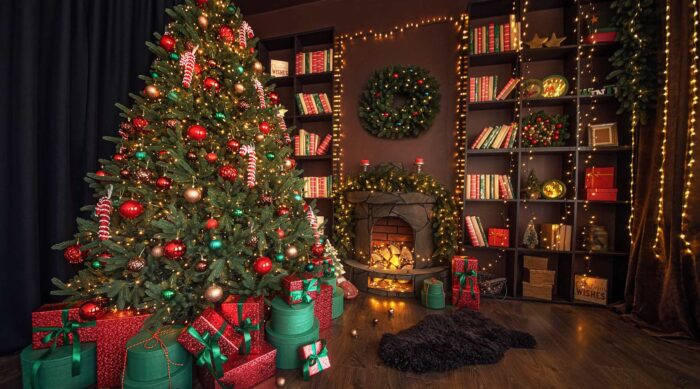History of Christmas lights(2)

Electric Lights Enter the Scene
In 1882, a momentous event took place in New York when the first Christmas tree illuminated by electric lights was introduced. Edward Johnson, a friend of the famous inventor Thomas Edison, was responsible for this innovative display. The Christmas tree was lit with beautiful hand-wired strings of red, white, and blue lights, which are still favorites today. This milestone paved the way for the creation of the first string of Christmas lights which were made available for sale around 1890.
Lighting up the White House
The White House saw its first electrically lit Christmas tree in 1895, when it was illuminated by President Cleveland’s First Lady, Frances Cleveland. She considered Christmas lights, “technologically savvy”! (2) Go, Frances!!
Making Lights More Accessible
Initially, the cost of these electric lights made them prohibitively expensive for most people, with a set of 24 lights priced at $12, equivalent to around $80 today. However, a brilliant idea emerged—renting Christmas lights. General Electric (GE) produced the first sets of Christmas lights for rent in 1903, making them more accessible to a broader audience. These lights came in seven colors: clear, frosted, green, blue, purple, ruby, and opal.
Public Reluctance and Safety Innovations
Not everyone took to these new-fangled decorations due to a general mistrust of electricity. In 1917, a fire caused by Christmas lights prompted some safety enhancements. Albert Sadacca developed safer lights that reduced the risk of fires caused by Christmas light strings.
But in 1917 Albert Sadacca recognized the marketability of Christmas light strings and featured them in his family’s store:
The Sadacca family owned a novelty lighting company and in 1917 Albert, a teenager at the time, suggested that its store offer brightly colored strands of Christmas lights to the public. By the 1920s Albert and his brothers organized the National Outfit Manufacturers Association (NOMA), a trade association. NOMA soon became NOMA Electric Co., with its members cornering the Christmas light market until the 1960s. (Library of Congress)
This retail event marked the beginning of wider acceptance of Christmas lights—and the beginning of the cherished tradition of placing strings of Christmas lights around trees and homes to illuminate the holiday season.
Outdoor Light Displays and Novelty Lights
The tradition of outdoor light displays, which we now associate with driving around to see beautifully lit homes and visiting elaborate light shows, began in North America. This expansion was made possible by the development of safe outdoor Christmas light bulbs and light strings in 1927.
In the 1930s, novelty lights started to emerge, spreading holiday cheer and boosting light sales during the Great Depression. This era saw the introduction of snowman lights, icicle lights, and various other holiday-themed lighting representations.
